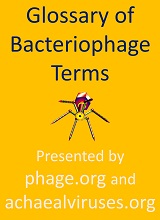

Chapter authored by Paul Hyman and Stephen T. Abedon published in 2009.
Hyman, P. and S. T. Abedon. 2009. Bacteriophage (overview). In: M. Schaechter (ed.), Encyclopedia of Microbiology. Elsevier, Oxford [Google Books]
First paragraph: Viruses are obligate intracellular parasites and may be categorized in terms of the types of cellular organisms that they infect. Three cell types exist: members of domains Eukarya, Archaea, and Bacteria. The viruses that infect the bacteria, for historical reasons, are called bacteriophage, or phage for short, meaning that they are 'eaters' of bacteria. Since most environments – including our own bodies – contain numerous bacteria, phage are found almost everywhere. Phage biologists have found phage in most environments that can support bacterial growth, often in phage-to-bacteria ratios of 10:1 or greater. As there exist estimates of total bacterial numbers of approximately 1030, there consequently is an expectation that there are 1031 or more total individual virus (mostly phage) particles, making phage Earth’s most numerous ‘organisms’. Bacteria are highly diverse, and perhaps there are millions of species of these prokaryotes. Phage–bacterial interactions therefore are quantitatively vast (huge numbers of interactions) and qualitatively diverse (huge numbers of environment types, bacterial–host types, and also individual phage types). In this article we provide an overview of this enormous diversity of phage types, variations on phage biology, and the importance of phage in the laboratory, in environments, and, potentially, in the clinical setting.
Contact web master. Return to terms.











